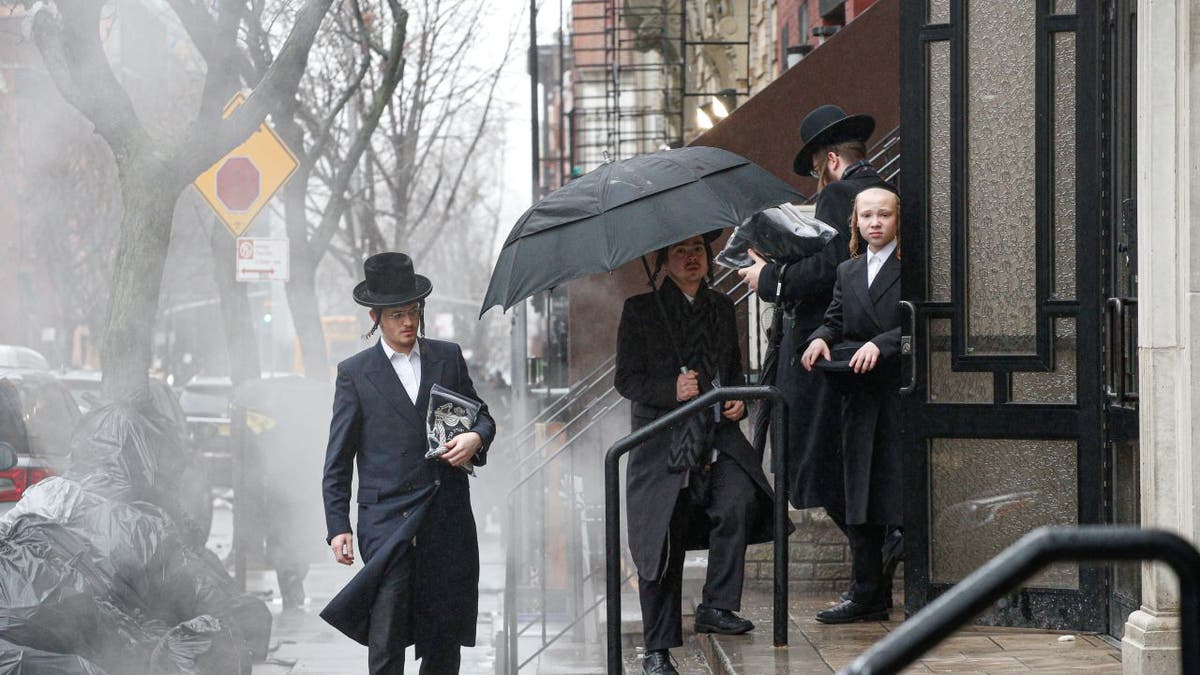Latest & Breaking News on Fox News
In 2019, responding to growing normalization of progressive antisemitism and anti-Israelism in the Democratic Party, we coined the Brexit-inspired term “Jexodus.” Jexodus inspired immediate derision as yet another hopeless claim, useless against the Democrats’ impervious lock on the enigmatic “Jewish Vote.”
Our focus was elsewhere. We’d identified a voting bloc of traditional Jews, small but strategic in the big picture, that was ripe to flip from blue if not to red, then at least to genuine independence. Well, there’s no denying any longer that Jexodus is real – and its impact has already proven to be greater than anything even we could have anticipated.
On the local front, the turmoil and power of Jexodus sentiment was felt first. In 2021, Nassau County – with a greater population and GDP than 10 states – flipped blue to red very much thanks to this demographic. The new County Executive Bruce Blakeman is himself a longtime friend to the traditionalist community.
WITH ANTISEMITISM ON THE RISE, AMERICAN JEWISH GROUPS AIM TO TAKE A STAND AGAINST THREATS
That may not have pinged anyone’s radar in Washington, but in New York it caught the attention of congressman and GOP gubernatorial candidate Lee Zeldin. Leading the 2022 GOP charge statewide, Zeldin understood what mattered to Jexodus voters and that Jexodus voters mattered. The results were stunning. Zeldin came far closer than expected to an upset over incumbent Governor Kathy Hochul, and in his surging campaign wake, four New York House seats actually flipped blue to red.
Every one of those seats had a sizable concentration of Jexodus voters. In short, Jexodus wasn’t merely significant to New York: amid otherwise terrible midterm performance, the 2022 Jexodus vote was perhaps the key factor delivering the House to the GOP.
Who are Jexodus voters, and why are they restless?
Politically, identities, like issues, are relevant only if they impact voting patterns. Ethnicities or affinity groups whose members vote as age, income, education, and ZIP code would anyway predict are electorally uninteresting. That’s why it’s been decades since we last heard about the once-critical Irish vote and why gun owners are politically relevant, but Scrabble players are not. If, on the other hand, members of one group vote differently from similarly situated members of other groups, the issues and priorities driving that difference are worth understanding.
Most political discussions about the “Jewish Vote” focus on the wrong Jews. The overwhelming Democratic preference of the stereotypical mainstream American Jew derives from them having assimilated. Largely urban/inner suburban, affluent, and college educated, their vote is entirely unlinked to them being Jews.
There is, however, a genuinely identifiable, politically covetable Jewish vote. Its most visible component is Orthodox — Jews who live, dress, think and act uniquely as Jews — but it also includes non-observant Jewish émigrés from the former Soviet Union, Middle East and North African countries, Israel and their children. These “traditionalists” tend to live in enclaves and maintain a uniquely Jewish prioritization of issues.
For those living in and around New York — by far the largest concentration — the past few years have been brutal. Atop general concerns about inflation and the declining quality of life, they’ve been disproportionately targeted for street, subway and hate crime. The late-2019 massacres in Monsey, New York, and Jersey City, New Jersey, are still raw.
When COVID-19 hit, Governor Mario Cuomo and New York Mayor Bill de Blasio repeatedly slandered Orthodox Jews as responsible for its spread. Restrictions on communal prayer and gathering battered the community even as the same Democrats encouraged a Black Lives Matter movement steeped in antisemitism and street violence.
CLICK HERE TO GET THE OPINION NEWSLETTER
In the run-up to November’s election, The New York Times ran a hit piece smearing private Jewish religious schools — just in time for New York’s Democrat-run Board of Regents to denounce them and demand control.
Those seemingly parochial concerns place this community at the forefront of America’s burning cultural issues: parental rights, religious freedom, racism and discrimination, criminal justice reform, education standards and content, Second Amendment and more. On every one of these issues, as on concern for Israel, traditionalist Jewish interests align with powerful blocs in the GOP — and against today’s Democratic Party.
At the establishment leadership level, old alliances die hard. But we predicted Jexodus because we saw the grassroots becoming restless and dissatisfied. Trump’s scornful iconoclasm was popular with this cohort in 2016; even more in 2020. We saw a community of outsiders directly impacted enough to appreciate that politicians whose interests and values diverge from your own are not your friends even if they throw money into your community. “Tradition” has become anathema to Democrats; the Jexodus vote is as much about preserving Jewish ways of life as it is about preserving Jewish lives.
The results speak for themselves. According to GOP strategist Michael Fragin, an expert in Jewish community voting patterns, turnout was massive. Heavily traditionalist precincts in the Five Towns netted Anthony D’Esposito more than 8,000 votes; he won his congressional race by 10,000. Those in Great Neck netted Rep.-elect George Santos 3,000 of his 20,000-vote victory. (Oy.) Traditionalist bastions in Rockland County favored both Zeldin and Rep.-elect Mike Lawler by over 12,000 votes. Lawler dethroned DCCC Chair Sean Patrick Maloney by 3,000 votes. Orthodox enclaves in Staten Island broke heavily for both Zeldin and Rep. Nicole Malliotakis. And in Sullivan County, Jewish strongholds helped elect Rep. Marc Molinaro to Congress.
Taken together, in 2022, traditionalist Jews – Jexodus – helped swing four closely contested House seats, arguably the key to the only national GOP success story.
Jexodus is here. Jexodus is powerful. And Jexodus is, as they say, “Good for the Jews.”
Jeff Ballabon is a principal at B2 Strategic public affairs and The American Restoration Institute.







